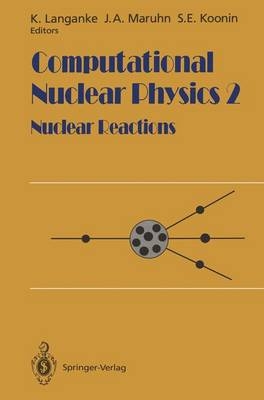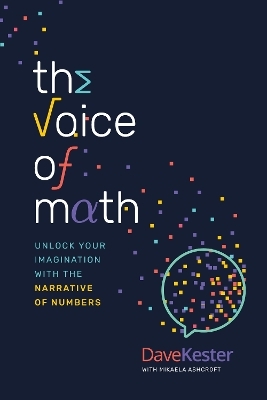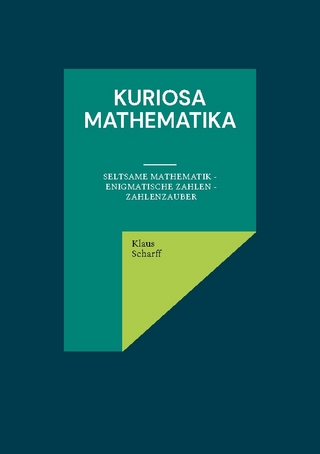
Computational Nuclear Physics
Springer-Verlag New York Inc.
978-0-387-97954-0 (ISBN)
- Titel ist leider vergriffen;
keine Neuauflage - Artikel merken
1. One-Boson-Exchange Potentials and Nucleon-Nucleon Scattering.- 1.1 The Meson Theory of Nuclear Forces.- 1.2 Relativistic Two-Nucleon Scattering.- 1.2.1 Covariant Equations.- 1.2.2 The R-Matrix Equation and Helicity State Basis.- 1.2.3 The On-Shell R-Matrix and Phase Shifts.- 1.2.4 Effective Range Parameters.- 1.2.5 Using Thompson’s Equation.- 1.3 One-Boson-Exchange Potentials.- 1.3.1 Interaction Lagrangians and OBE Amplitudes.- 1.3.2 Partial-Wave Decomposition.- 1.3.3 Meson Parameters and Two-Nucleon Predictions.- 1.4 Numerics and Codes.- 1.4.1 Momentum-Space OBEP.- 1.4.2 $$/hat R$$-Matrix and Phase Shifts.- 1.5 Using the Codes.- 1.5.1 OBEP Code BONN.- 1.5.2 Code PHASES.- 1.6 What Else?.- Acknowledgments.- References.- 2. The G-Matrix in Finite Nuclei.- 2.1 Introduction.- 2.2 The G-Matrix, a First Step Towards an Effective NN Interaction.- 2.3 The Solution of the Bethe-Goldstone Equation.- 2.4 Details of the Numerical Calculation.- 2.5 Some Examples for Tests and Studies.- 2.6 Technical Note.- References.- 3. The Nuclear-Matter Effective Interaction.- 3.1 Background.- 3.2 The Bethe-Goldstone Equation in Uniform Matter.- 3.3 The Reference Spectrum Method.- 3.4 The Legindgaard Representation.- 3.5 Numerical Methods.- 3.5.1 The Off-Shell Reference Effective Interaction for a Local Potential.- 3.5.2 The Nuclear Matter Reaction Matrix.- 3.6 Remarks on the Code.- 3.6.1 Input to TREF.- 3.6.2 Output from TREF.- 3.6.3 Input to TNM.- 3.6.4 Output from TNM.- 3.7 Performance.- 3.8 Things to Do.- References.- 4. Microscopic Description of Nuclear Collisions.- 4.1 Introduction.- 4.2 Theoretical Background to the Resonating Group Method.- 4.3 A Short Description of the Numerical Methods Used and the Program Structure.- 4.4 Installation and Use of the Codes.- 4.5 Physical Applications.- 4.6 Technical Note.- References.- 5. The Distorted-Wave Born Approximation.- 5.1 General Description of DWUCK4.- 5.2 Specific Cases of Reactions.- 5.2.1 Inelastic Excitation Using a Collective Nuclear Model.- 5.2.2 The (d,p) Stripping Reaction.- 5.2.3 The (p,d) Pickup Reaction.- 5.2.4 The Microscopic Interaction Model for Inelastic Scattering.- 5.3 Description of the Input for DWUCK4.- 5.4 Sample Cases-Input and Output.- 5.5 Things to Do.- 5.6 Technical Note.- References.- 6. Statistical-Model Calculations with Angular-Momentum Coupling.- 6.1 Background.- 6.2 Basic Features of the Code.- 6.3 Level-Density Tables.- 6.4 Transmission Coefficients.- 6.5 Fission Barrier and Probability.- 6.6 Angular Distribution.- 6.7 Special Programming Features.- 6.8 Input and Output Files.- 6.9 Summary.- 6.10 Technical Note.- References.- 7. The Time-Dependent Hartree-Fock Approximation for Nuclear Slabs.- 7.1 Background.- 7.2 Interaction.- 7.3 Reduction to One Dimension.- 7.4 Numerical Methods.- 7.4.1 The Static Problem.- 7.4.2 The Dynamic Problem.- 7.5 Remarks on the Code.- 7.5.1 Input.- 7.5.2 Output.- 7.6 Running the Code.- 7.7 Things to Do.- References.- 8. The Vlasov-Uehling-Uhlenbeck Model.- 8.1 Introduction.- 8.2 Theoretical Description of Heavy-Ion Collisions.- 8.3 The VUU Equation.- 8.4 The Nuclear Equation of State.- 8.5 Numerical Realization.- 8.6 The Basic Structure of the Program.- 8.7 Running the Program.- 8.7.1 Compilation and Linking.- 8.7.2 Input.- 8.8 Input Examples.- 8.9 Interpretation of the Output.- 8.10 Output Analysis with VUUANL.- 8.11 Final Comments on Using the Program.- 8.12 Test Output.- References.- 9. The Friction Model for Deep-Inelastic and Fusion Reactions.- 9.1 Introduction.- 9.2 Description of the Program.- 9.2.1 FOLDING.- 9.2.2 FIT.- 9.2.3 FRICTION.- 9.3 The Structure of the Final Printout File.- 9.4 Running the Code with the Sample Input.- References.- 10. The Quark Model and the Nucleon-Nucleon Interaction.- 10.1 Introduction.- 10.2 The Resonating Group Method.- 10.3 The Hamiltonian of the Six-Quark System.- 10.4 Remarks on the Code.- 10.4.1 General Structure of the Program.- 10.4.2 Input Parameters.- 10.4.3 Output of the Code.- 10.4.4 Library Routines.- 10.4.5 Performance.- 10.4.6 Sample Parameters and Exercises.- 10.5 Technical Note.- References.- 11. Hadron-Hadron and Hadron-Nucleus Scattering.- 11.1 Introduction.- 11.2 Multiple Scattering Off Nuclei.- 11.2.1 General Formalism.- 11.2.2 Numerical Methods.- 11.2.3 Program Description MUSH (Multiple Scattering of Hadrons) and Performance.- 11.2.4 Discussion of the Results.- 11.3 Hadronic Interactions in the Quark Model.- 11.3.1 Definition of the Model.- 11.3.2 Solution of the 4-Quark Problem.- 11.3.3 Calculational Methods.- 11.3.4 Numerical Methods.- 11.3.5 Program Description QUASH (Quarks and Hadron Scattering) and Performance.- 11.3.6 Discussion of the Results.- 11.4 Conclusion.- 11.5 Technical Note.- References.
| Erscheint lt. Verlag | 16.4.1993 |
|---|---|
| Reihe/Serie | Neuroscience |
| Zusatzinfo | Bibliography |
| Verlagsort | New York, NY |
| Sprache | englisch |
| Gewicht | 535 g |
| Themenwelt | Mathematik / Informatik ► Mathematik ► Arithmetik / Zahlentheorie |
| Naturwissenschaften ► Physik / Astronomie ► Atom- / Kern- / Molekularphysik | |
| ISBN-10 | 0-387-97954-9 / 0387979549 |
| ISBN-13 | 978-0-387-97954-0 / 9780387979540 |
| Zustand | Neuware |
| Haben Sie eine Frage zum Produkt? |
aus dem Bereich


